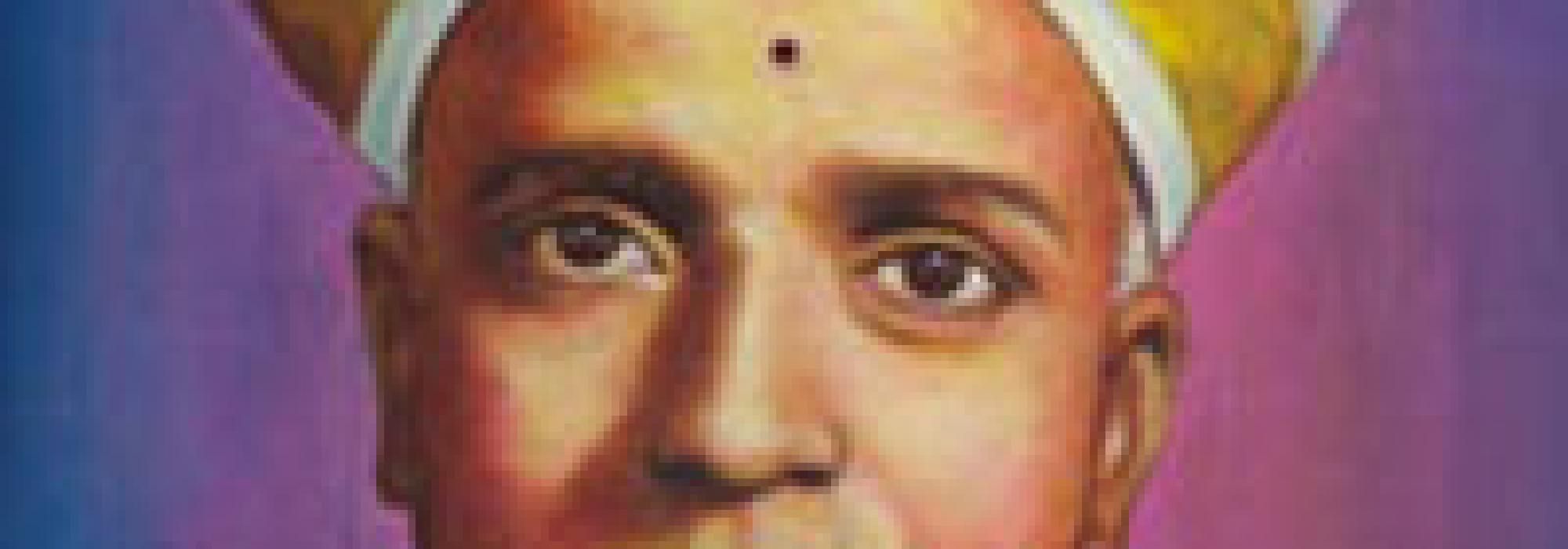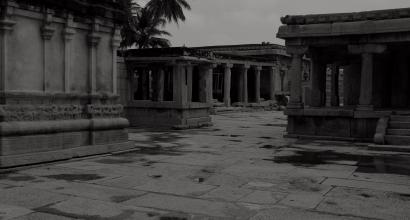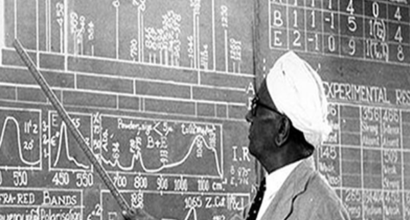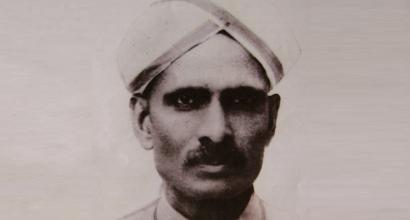Prabuddha Karnataka
Krishnasastri took up the sole responsibility of taking care of the Karnataka Sangha, its activities, and also as the chief editor of Prabuddha Karnataka (A Kannada newsletter, which largely consisted of articles by litterateurs of the period). These were responsibilities he had taken up on his own. He considered these as an integral part of his professorship and never took them lightly. The Sangha was his brainchild as was the newsletter. Thus, the two were amongst his primary activities and achievement.
Venkannayya’s method of teaching was different from Krishnasastri’s, but he was able to kindle interest and enthusiasm in students, just as the latter would do. It will not be wrong to say that they were equals in this matter.
It was so even with respect to the activities of the Karnataka Sangha – both Krishnasastri and T S Venkannayya were equally dedicated to the cause. However, Venkannayya’s role was usually that of an initiator or motivator. Krishnasastri on the other hand was a hard worker who put Venkannayya’s ideas into practise. Venkannayya would offer his suggestions to Krishnasastri in such a manner that it would sound like he was talking in reference to someone else. He would say, “There would have been fragrance all around if only we could light a few incense sticks here and there…” or “Decking photographs with garlands made of Sevantige (Chrysanthemum), it is certainly pleasing to the eyes. A garland of jasmine flowers, however, would have given it the feel of a royal court…” or “The kosumbari (a side-dish, a culinary specialty of Karnataka) is indeed good. If only some raw mango were grated and added to the kosumbari, it would have added much to the flavour.” His words were always full of suggestion. Krishnasastri would listen to his words and execute them after displaying mild irritation. This kind of conversation between the two was comical for the rest of us to watch. All the works of the Sangha took place in this manner. Venkannaya would softly put forward his ideas and proposals. Krishnasastri would turn them into reality even as he muttered words of annoyance under his breath.
The ‘Four-armed’ Venkannayya
It was only in the matters connected with Prabuddha Karnataka that the two ever had a dispute. It was merely light-hearted quarrel that they used to engage in.
Venkannayya always tried evading his responsibility of giving articles to Prabuddha Karnataka. The number of articles he wrote for the newsletter was abysmally low. He probably wrote none. All the writing was mainly Krishnasastri’s. In this context, Krishnasastri would compare Venkannayya to the four-armed Viṣṇu. The four arms were – (1) Aviṣaya (Irrelevance) (2) Anabhyāsa (lack of practise) (3) Buddhi-māndhya (dullness of intellect) (4) Anyakartavyabhāra (Being busy with other engagements).
Krishnasastri – “Venkannayya – write an article for the upcoming issue!”
Venkannayya – “Krishna! What do I know? I can think of no topic. The topics that you suggest suit you – you are a great scholar. Moreover, it is related to the śāstras. How can I try my hand at it while you are around?”
When Krishnasastri tried suggesting a topic that would not receive a reply of the aforementioned kind, he would say, “Krishna! I have lost the habit of writing! I tend to get several doubts while writing. My pen refuses to move an inch forward. What can I do?” Thus Venkannayya would express his helplessness
“Forget it. Why don’t you at least review the articles sent by others?”
“I don’t seem to understand such matters at all, Krishnaa! They write about such profound topics. If I try to put my hand in the matter, it will only spoil it!”
If Krishnasastri asked him to go through his own article and suggest corrections, he would say, “I have to teach an honours class now. I will need to go through Daśarūpaka. I will also need to study the Sāhitya-darpaṇa in detail. These texts consume a lot of time. Am I a scholar like you? This kind of work is a piece of cake for you.”
He escaped from the ordeal by offering such excuses.
Krishnasastri would fret. “How do I catch hold of this person and make him work? He has an excuse to escape from all kinds of activities!”
It gave me tremendous pleasure to see their comical quarrel. To be honest, I will need to accept that Venkannayya was lackadaisical in his work. He always tried to be diplomatic. He never spoke harsh words about anyone. If he corrected another’s writing, he thought that the author would feel bad that he was pointing out mistakes. Also, I have to but admit that he was lazy to some extent.
Both Krishnasastri and Venkatanaranappa said that laziness was Venkannayya’s quality by birth. When they said so, Venkannayya never felt bad; instead, he said, “What can one do to a quality that I am born with?”
If someone handed a writing of theirs seeking review from him, Venkannayya would pretend as though he went through it and would give very peripheral suggestions such as: “Here, the consonant ‘ta’ doesn’t have its ottu (a diphthong) printed properly.” or “You will need to give proper attention to the letters ‘ba’ and ‘o’ while writing.” or “I am not able to figure out if this is ‘ta’ or te’ – please check!” He would escape from the responsibility by providing such irrelevant suggestions.
Krishnasastri, on the contrary took to a totally different path.
“Can you check if suṣṭu is the right usage, or is it suṣṭhu? Have you come across the word used in a particular manner in the past? What is the etymology of the word?” His tone would suggest some aggressiveness but he never meant it. That was his usual style of speaking.
Krishnasastri and I often engaged in debates. Our mutual friend, S G Shastry had translated the play The Death of Socrates from English to Kannada. He requested me to write a foreword to his work and I did so. In my foreword, I had written that Socrates’s wife Xanthippe was a quarrelsome lady and it was because of the troubles he experienced from her that his mind turned towards philosophy.
Krishnasastri had raised an objection on this point. “If Socrates roamed around in the streets perching philosophy without caring for his household, what would become of his wife? Who cared for his children? It was husband’s excessive taking to philosophy that triggered quarrels at home, I am sure. How can anyone live with such a person?”
One evening, Krishnasastri had visited the Gokhale Institute. Just as he was leaving from the place, another friend came by. He spoke to Krishnasastri. “Sir, your Vacanabhārata is a great contribution to the gamut of Kannada literature. You should also write Vacanarāmāyaṇa, sir!”
“I don’t think I can do it.”
“What makes you say so, sir?”
“Bhārata is a purāṇa. Rāmāyaṇa is kāvya. The beauty of Rāmāyaṇa cannot be compressed or put in a concise manner. In the Mahābhārata, the story takes prominence over poetry. It is easier to speak about it. In the Rāmāyaṇa, on the contrary, the poetry is more important than the story. How can I capture the aesthetic beauty in prose rendition of the epic?
“Cañcaccandra-kara-sparśa (Vālmīki Rāmāyaṇa – 4.30.45) How can I concisely capture the beauty of the above verse? If I do away with such verses, I would have compromised upon all poetic beauty there”
I remember yet another episode.
Once, a meeting of the Kannada Sangha was held in the Mathematics Hall of Central College. The meeting finished by around eight in the evening. After everyone left, four or five of us remained there. C R Narayana Rao, Professor of Zoology, had parked his Buick car in front of the hall. He asked Krishnasastri and me to join him. I got into the vehicle. Krishnasastri stood there and seemed to hesitate to get into the car. C R Narayana Rao said, “O Shastry! Please step in!”
“No, I can’t travel in your car.”
“Why? Are you angry with me?”
“No, I am not angry, sir. I have my bicycle here. I will ride home on that.”
“You can leave your bicycle here tonight.”
“I will need to come to the college again tomorrow. Your car won’t be available to drop me tomorrow!”
“Don’t worry! I will make it available. It will wait at your door for you, tomorrow morning.”
“You are really generous, sir. Why should I fall into your obligation?”
This was Krishnasastri - An uncut diamond – anāviddham ratnam.
To sum it up, one could say that Krishnasastri and Venkannayya were not two different persons. In a friendly gathering of the Karnataka Sangha of Mysore College, Vembar Venkatacharya quoted the following lines in reference to his teachers. (The line is from a composition of the dramatist Varadacharya. Both Krishnasastri and Venkannayya had taught Vembar Venkatacharya) –
“ಮನವೊಂದು ಯೋಚಿಸಲು
ತನುವೆರಡು ಸಾಧಿಸಲು”
(A single mind to think, two bodies to act.)
This is the second part of a two-part English translation of the twenty-fifth chapter of D V Gundappa’s Jnapakachitrashaale (Volume 3) – Sahityopasakaru. Edited by Hari Ravikumar.




































